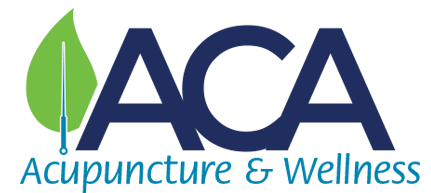

Moxibustion is an ancient healing practice rooted in Traditional Chinese Medicine (TCM) that has been used for centuries to promote well-being, alleviate pain, and balance energy within the body. This technique involves burning dried mugwort (moxa) near specific acupuncture points to generate warmth and stimulate circulation, immune function, and overall vitality.
Although often associated with acupuncture, moxibustion is a distinct therapy with unique therapeutic benefits. Many holistic practitioners incorporate it into alternative treatments to address a wide range of health conditions, from digestive disorders to joint pain and fertility issues.
In recent years, moxibustion has gained traction in Western wellness circles, where individuals seek natural, non-invasive healing methods. Whether you are new to the concept or considering trying moxibustion, understanding its history, techniques, and benefits can help you make an informed decision.
Moxibustion is an ancient healing practice rooted in Traditional Chinese Medicine (TCM) that has been used for centuries to promote well-being, alleviate pain, and balance energy within the body. This technique involves burning dried mugwort (moxa) near specific acupuncture points to generate warmth and stimulate circulation, immune function, and overall vitality.
Although often associated with acupuncture, moxibustion is a distinct therapy with unique therapeutic benefits. Many holistic practitioners incorporate it into alternative treatments to address a wide range of health conditions, from digestive disorders to joint pain and fertility issues.
In recent years, moxibustion has gained traction in Western wellness circles, where individuals seek natural, non-invasive healing methods. Whether you are new to the concept or considering trying moxibustion, understanding its history, techniques, and benefits can help you make an informed decision.
Moxibustion therapy uses heat from burning mugwort to stimulate acupuncture points, promoting circulation, energy flow, and overall vitality.
The technique is often used in Traditional Chinese Medicine to address cold-related conditions, such as joint stiffness, menstrual cramps, and fatigue.
Indirect moxibustion, which does not involve skin contact, is the most common and safest form used in modern clinics and wellness centers.
Practitioners apply moxibustion based on individual health concerns, often targeting meridians to restore balance and strengthen immune response.
Studies suggest moxibustion may help turn breech babies before birth, especially when applied to acupuncture point BL-67 under professional supervision.
The application of heat therapy has been a fundamental part of Traditional Chinese Medicine (TCM) for centuries, helping to stimulate circulation, relieve stagnation, and restore balance within the body. Moxibustion works by generating therapeutic heat, using burning mugwort (Artemisia vulgaris) to activate specific acupuncture points and enhance energy flow throughout the meridians.
As the moxa burns, it produces radiant heat that penetrates deep into the muscles, joints, and energy pathways (meridians), helping to:
Unlike acupuncture, which involves inserting fine needles into the skin to stimulate specific energy channels, moxibustion relies solely on heat stimulation. The therapy can be used alone or in combination with acupuncture, depending on the condition being treated and the desired outcome.
Moxibustion has been practiced for over 2,500 years, with historical references found in ancient Chinese medical texts like the Huangdi Neijing (The Yellow Emperor’s Classic of Medicine). In these writings, moxibustion is described as a treatment to dispel cold and dampness, strengthen immunity, and promote long-term wellness.
This practice has also been widely adopted in other East Asian medicinal systems, including:
Moxibustion continues to be a cornerstone of holistic medicine, with many practitioners incorporating it into treatments for pain management, digestion, and reproductive health.
Moxibustion is administered in two primary ways:
In direct moxibustion, small moxa cones are placed directly on the skin and burned until the patient feels an intense warming sensation. This method is further divided into:
Though effective, direct moxibustion is less common in Western practices due to concerns about skin irritation and burns.
Indirect moxibustion is a safer, more popular method, where moxa is burned near the skin but not in direct contact. Techniques include:
A licensed TCM practitioner assesses the patient’s health condition and selects the most appropriate acupuncture points. The treatment is customized to target qi imbalances, circulation issues, or cold-related ailments.
A typical moxibustion session involves:
Moxibustion is frequently used in both preventative care and treatment for various ailments. The heat generated from burning moxa (mugwort) is believed to penetrate deep into the body, activating circulation and stimulating the body’s natural healing mechanisms.
Here’s a deeper look at some of the key benefits of moxibustion:
Many conditions in TCM are linked to an excess of cold or dampness in the body, which can cause stagnation, slow metabolism, and discomfort. Moxibustion is often used to warm meridians (energy pathways) and promote better blood circulation. This can be particularly useful for:
By stimulating warmth and energy flow, moxibustion supports healthy circulation, ensuring that nutrients and oxygen reach all parts of the body effectively.
Digestive disorders are a common concern in Traditional Chinese Medicine, often linked to spleen and stomach imbalances. Moxibustion is believed to strengthen digestive function by:
The acupuncture points ST-36 (Zusanli) and CV-12 (Zhongwan) are often used for digestive health, with moxibustion applied to stimulate metabolism and gut motility.
Many women turn to moxibustion therapy to relieve menstrual pain and regulate cycles. It is commonly applied to:
Moxibustion is often used on acupuncture points like SP-6 (Sanyinjiao) and CV-4 (Guanyuan) to promote reproductive health. Some fertility specialists also integrate it into assisted reproductive treatments (IVF, IUI) as a complementary therapy.
In TCM, chronic fatigue is often linked to qi deficiency, meaning the body’s energy reserves are depleted. Moxibustion can:
Regular moxibustion sessions on points like ST-36 (Zusanli) and CV-6 (Qihai) can help individuals recover from burnout, stress, and low vitality.
Moxibustion is widely used for treating arthritis and musculoskeletal pain, as its heat penetrates deep into the joints and muscles. It is particularly beneficial for:
By applying moxa to acupuncture points along the meridians, the therapy can relieve pain, reduce inflammation, and promote mobility in individuals suffering from chronic joint issues.
One of the most well-known modern applications of moxibustion is its use in turning breech babies before birth. Research and anecdotal evidence suggest that applying moxa to the acupuncture point BL-67 (Zhiyin), located near the outer edge of the pinky toe, may encourage fetal movement and increase the likelihood of the baby turning head-down.
A systematic review and meta-analysis published in the Journal of Acupuncture and Meridian Studies evaluated the effectiveness of moxibustion in correcting breech presentation. The study concluded that moxibustion has a positive effect on correcting breech presentation, especially in the Asian population.
Similarly, a Cochrane review found that moxibustion, when combined with usual care, probably reduces the number of non-cephalic presentations at birth compared to usual care alone or sham moxibustion plus usual care. However, the review noted that moxibustion probably results in little to no difference in the rate of cesarean sections.
These findings suggest that moxibustion may be considered as a natural alternative before opting for medical interventions like external cephalic version (ECV) or cesarean sections. However, it is essential to consult with a healthcare provider before undergoing moxibustion treatment to ensure safety and appropriateness for individual cases.
Although moxibustion is considered safe for pregnancy, it is essential to consult a qualified healthcare provider before attempting it. It should always be performed under the guidance of a trained acupuncturist or midwife to ensure safety.
Beyond its traditional uses, moxibustion is often recommended for various chronic conditions that affect overall well-being. Some of the most common conditions include:
Moxibustion is widely used for arthritis, joint pain, and muscle tension. The warmth produced by burning moxa helps to:
In TCM, cold and dampness are often associated with lung-related illnesses, such as:
By applying moxa to LU-1 (Zhongfu) and CV-17 (Shanzhong), moxibustion can help open up airways and promote easier breathing.
People struggling with chronic fatigue syndrome (CFS) or long-term burnout may find moxibustion beneficial. Since TCM associates fatigue with qi deficiency, applying moxa can:
Women experiencing irregular cycles, painful periods, or PMS symptoms can benefit from moxibustion by:
Applying moxa to points like SP-6 (Sanyinjiao) and CV-4 (Guanyuan) can support overall menstrual health.
Moxibustion is generally safe when performed correctly, but certain precautions should be taken.
Smokeless moxa is a safer alternative for individuals with respiratory concerns.
Moxibustion is widely available at acupuncture clinics, TCM wellness centers, and integrative health practices. It is often combined with acupuncture or cupping therapy to enhance therapeutic benefits.
At ACA Acupuncture and Wellness, our practitioners provide personalized moxibustion treatments tailored to individual health needs. Whether you’re seeking relief for pain, digestion issues, immune support, or breech pregnancy, we ensure a safe and effective approach guided by Traditional Chinese Medicine principles.
To ensure safe and effective treatment:
At ACA Acupuncture and Wellness, our skilled practitioners offer comprehensive consultations and customized treatments to support your health and wellness goals. Contact us today to learn more about how moxibustion can benefit you.
Sources:
Cochrane Pregnancy and Childbirth Group. (2023). Moxibustion for turning a breech baby in pregnancy (Review). Cochrane Database of Systematic Reviews, (CD003928). https://www.cochrane.org/CD003928/PREG_moxibustion-turning-baby-breech-position
Coyle, M. E., Smith, C. A., & Peat, B. (2023). Cephalic version by moxibustion for breech presentation. Cochrane Database of Systematic Reviews, 2023(5), CD003928.
Liao, J. A., Shao, S. C., Chang, C. T., Chai, P. Y. C., Owang, K. L., Huang, T. H., Yang, C. H., Lee, T. J., & Chen, Y. C. (2021). Correction of breech presentation with moxibustion and acupuncture: A systematic review and meta-analysis. Healthcare (Basel), 9(6), 619.
Moxibustion should be avoided if you have open wounds, inflamed skin, burns, or infections in the treatment area. It is not recommended for pregnant women (except under professional guidance for breech baby correction), individuals with diabetes or neuropathy (due to reduced heat sensitivity), or those with respiratory conditions like asthma, as the smoke may trigger symptoms. Always consult a licensed practitioner before use.
At ACA Acupuncture and Wellness, our practitioners provide personalized assessments to determine if moxibustion is a safe and effective option for your health needs.
While generally safe, moxibustion may cause minor burns, skin irritation, or blisters if improperly applied. Some individuals may experience smoke sensitivity, leading to mild respiratory discomfort. Rarely, improper technique can cause scarring (in direct moxibustion). Choosing a qualified practitioner helps minimize risks.
The effects of moxibustion vary depending on the condition being treated. Some people feel immediate warmth and relaxation, while others may require several sessions to notice significant improvements, especially for chronic pain, digestive issues, or fatigue. For breech baby correction, results are typically observed within a few days to weeks of consistent treatment.
After a session, you may feel deep warmth, relaxation, or slight redness at the treated areas. Some report improved digestion, reduced pain, or increased energy within hours or days. Mild detox symptoms, such as fatigue or slight dizziness, can occur as the body adjusts. Staying hydrated and resting post-treatment is recommended.
Yes, research suggests moxibustion may help reduce inflammation by modulating cytokines (TNF-α, IL-6) and improving microcirculation. It is commonly used for arthritis, muscle stiffness, and inflammatory bowel diseases (IBD). The heat generated helps relax muscles, stimulate blood flow, and promote natural healing.
While not a direct weight-loss method, moxibustion may support metabolism and digestion, potentially aiding in weight management. It is believed to enhance energy flow, reduce bloating, regulate appetite, and improve gut health. Combined with acupuncture, a healthy diet, and exercise, it may contribute to better weight balance over time.
LOCATIONS
MANHATTAN
QUEENS
NEW JERSEY
CALIFORNIA

The over $4 billion US acupuncture market offers a great opportunity with over 10% annual growth rates and a continuing flow of new patients interested in the benefits of acupuncture.